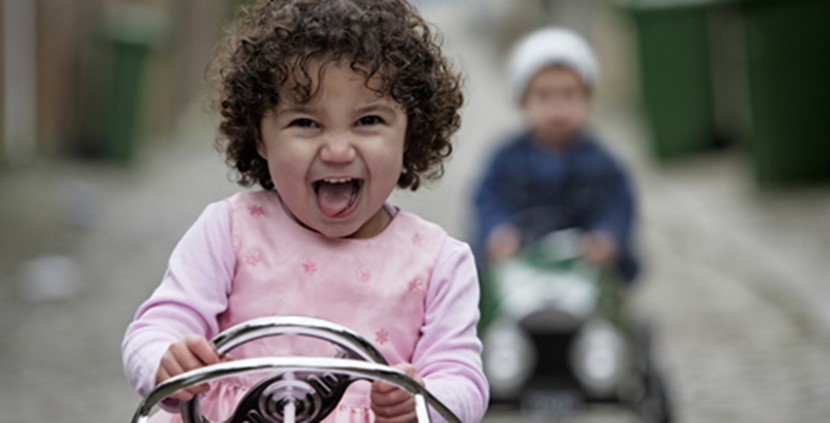Car seat safety for toddlers

Now that you've gotten used to having a little chatterbox babbling away in the backseat while you're chauffeuring them to music, playgroup, baby gym, the playground, the toy store, and everywhere else, you may feel more at ease about driving with your baby in the car.
However, they still need to be buckled into an approved child restraint every time they are in the car. Even if your toddler is on the larger side, they still need to be buckled up every single time -- and you shouldn't depend on them to do it properly themselves, although they may insist that "I can do it myself!"
By law, all children in New Zealand up to the age of seven must be restrained in an approved child restraint that is appropriate for their age, weight and height.
One of the questions you might ask now is whether or not your just-turned-toddler is ready to be turned from facing the rear of the car, to facing the front of the car. Wherever possible for optimal protection in an accident, it is recommended to continue rear-facing for as long as possible up to the height and weight limits of the carseat, but until one year of age at the very least.
For the best protection of your child in an accident, you should continue to keep them restrained in a seat with a five-point harness. A booster seat is not an appropriate child restraint for a toddler.
Preferably, forward-facing restraints should be used with a top tether strap. When used correctly, tether straps prevent the seat from thrusting forward in a frontal crash. They also reduce side movement and can improve the stability and give a more firm installation of the seat.
Tethers for forward-facing seats are considered important safety features, as they reduce head excursion. Head excursion is the distance that the head of a child moves in the direction on impact or on rebound in a crash. The more head excursion allowed, the more likely their heads are to come in contact with the car interior, i.e. a window or steel-framed car door. Higher head excursions are also associated with severe spinal cord injuries, which can result in life-long paralysis or death.
At some point, some toddlers might decide that they like to take their arms out of their harness! Some helpful hints to help remedy this problem are:
- Make sure you have the harness tightened so that it is firm against your child's torso. There should not be any more than one finger's width of slack between the harness and the child's collar bone, and you should not be able to pinch any slack vertically on the strap. Keep in mind that you do need to adjust the tightness of the straps depending on the layers of clothing and growth of your child. Also, make sure that your harness is threaded through the correct harness slots in relation to your child's shoulders. Read your instruction manual.
- Pull the car over somewhere safely and explain to your child in an age-appropriate manner the consequences of what they are doing.
- Offer rewards for good behavior.
On those cold winter days, it is only natural to want to keep your toddler warm and snug in his car seat, but thick snowsuits or winter suits are a no go when in the car seat. In order for a car seat to perform as it should in an accident, the harness straps need to remain firm against the child's body. If the carseat's straps aren't fitted firmly against the child, there is an increased risk of being ejected from the carseat in an accident. While the harness might seem snug when you fit your toddler's harness, in an accident, thick snowsuits will compress due to the forces and induce slack in to the harness system, making it loose and ejecting your toddler from the seat. A good idea would be to put your toddler in his seat, fit the harness firmly, then fit a warm blanket over the top of the harness to keep your toddler warm.
We recommend that you have your child restraint and/or installation checked by a Safe2Go technician. To locate a Safe2Go technician near you, visit www.safe2go.co.nz and click on the Find a Technician button at the top of the page, or call the Child Safety Foundation on 0800 CHILD SAFETY (244 537).
This content was provided by certified Safe2Go Technician Bonnie Smith. Visit www.childrestraintsafety.com for more information about correctly and safely installing your child restraint.

